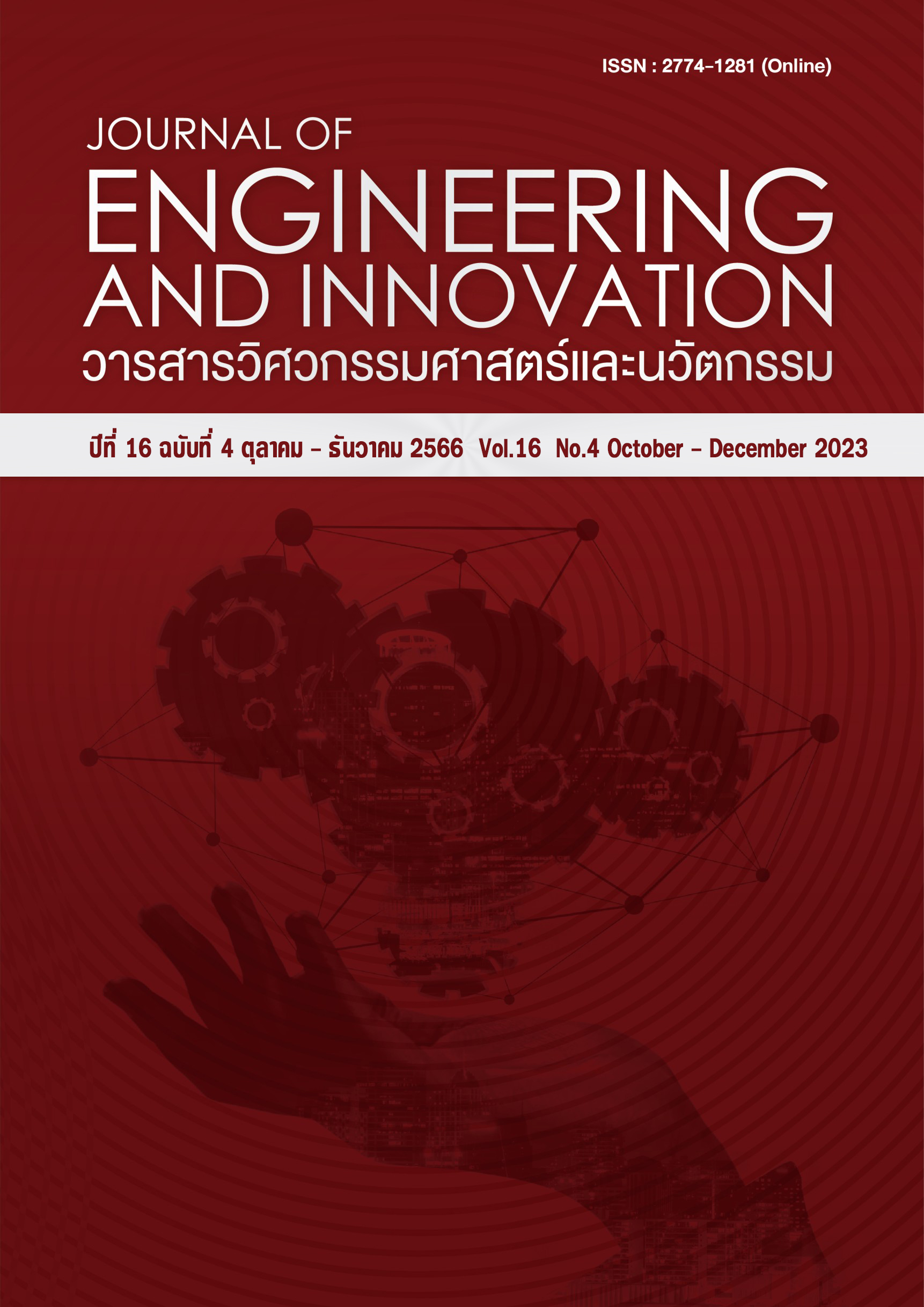Analysis of factors influencing tourist satisfaction for Cultural Tourism Management Case Study: Khiriwong Village Nakhon Si Thammarat Province, Chang Arena Buriram Province and Wat Phra Si Sanphet Ayutthaya Province
Main Article Content
Abstract
This research presents the factors influencing the satisfaction of the tourists for the management of cultural attractions which will affect the psychology of people in the area. The data collection of this research is within the epidemic situation of coronavirus disease 2019 (COVID-19). The hypothesis of the research was to analyze the data affecting the psychology of the people in the tourism area. The factors that would affect the psychology were: 1. the feeling of congestion, 2. cultural environment and landscape characteristics, 3. area management, 4. the number of the tourists found in the community, 5. behavior of other tourists. Moreover, in this research, there was a comparative study of 3 types of cultural tourism site: group 1 is the rural cultural tourism (Rural Cultural Tourism), group 2 is the modern cultural tourism (Modern Cultural Tourism), and group 3, heritage tourism (Heritage Tourism). The result showed that the value of resulted in the value of . It could be concluded that each group of cultural tourism management affected tourists’ satisfaction at a statistical significance level of 0.05. According to the data analysis in each factor, it was found that the values of , , , , and resulted in the value of . It could be concluded that each group of cultural tourism management affected tourists’ satisfaction in all 5 factors at a statistical significance level of 0.05. Each group of cultural tourism management was compared to see the difference in tourists’ satisfaction about the cultural tourism management using Scheffe’s statistical test as a post-test. According to the comparison between group 1, group 2, and group 3 in all 5 factors, it was found that the value of was negative and , indicating that tourists were satisfied with all 5 factors of cultural tourism management. It could be summarized that group 1 had less satisfaction than group 2 and 3 at a statistical significance level of 0.05. Hence, the management of cultural attractions in each form requires a planning and the strategies for managing in the different cultural attractions in order to meet the needs of tourists directly to the target group of tourists.
Article Details
References
กระทรวงการท่องเที่ยวและกีฬา, สถิตินักท่องเที่ยวในประเทศ (รายจังหวัด), ข้อมูลจาก https://www.mots.go.th/ more_new s_new. php?cid=411 (วันที่สืบค้นข้อมูล 13 พฤศจิกายน 2563)
จารุวรรณ วิโรจน์ (2557). การวิเคราะห์ความแปรปรวนทางเดียวและการเปรียบเทียบพหุคูณในงานวิจัยทางสาธารณสุข กรณีตัวอย่างการป้องกันโรคไข้เลือดออก. วารสารวิทยาศาสตร์และเทคโนโลยี มหาวิทยาลัยมหาสารคาม. Vol.34, No.3, May-June 2015
ชุมพล รอดแจ่ม. 2555. เส้นทางการท่องเที่ยวเชิงศิลปวัฒนธรรม อำเภอบางกรวย จังหวัดนนทบุรี. รายงานฉบับสมบูรณ์.
ดรรชนี เอมพันธุ์, พิมพ์ลภัส พงศกรรังศิลป์ และวันชัย อรุณประภารัตน์.2562. คู่มือการกำหนดขีดความสามารถในการรองรับการท่องเที่ยวพื้นที่หมู่เกาะลันตา จังหวัดกระบี่, สำนักงานคณะกรรมการส่งเสริมวิทยาศาสตร์ วิจัยและนวัตกรรม (สกสว.) และสำนักงานการวิจัยแห่งชาติ (วช.), กรุงเทพ
เถกิงศักดิ์ ชัยชาญ. 2556. “การพัฒนาคุณภาพการท่องเที่ยวเชิงนิเวศในภาคตะวันออกเฉียงเหนือ” มหาวิทยาลัยเทคโนโลยีสุรนารี.
ทรงศักดิ์ ภูสีอ่อน (2551). การประยุกต์ใช้ SPSSวิเคราะห์ข้อมูลงานวิจัย. กาฬสินธุ์: ประสานการพิมพ์
บันลือศักดิ์ วงษ์ภักดี (2552). ขีดความสามารถในการรองรับการใช้ประโยชน์ด้านนันทนาการของอุทยานแห่งชาติเขาชะเมา-เขาวง. วารสารสิ่งแวดล้อมและทรัพยากรธรรมชาติ. Vol.7, No.1, June 2009
พิมพ์ลภัส พงศกรรังศิลป์ และคณะ, 2562. โครงการย่อยที่ 1: การกำหนดขีดความสามารถในการรองรับการท่องเที่ยวด้านกายภาพ จิตวิทยา สังคม วัฒนธรรมและเศรษฐกิจ ของแหล่งท่องเที่ยวในพื้นที่หมู่เกาะลันตา จังหวัดกระบี่. รายงานฉบับสมบูรณ์.
ไพฑูรย์ สุขศรีงาม (2557). หลักการใช้การวิเคราะห์ความแปรปรวนหลายตัวแปร Multivariate Analysis of Variance: MANOVA. วารสารวิชาการการจัดการเทคโนโลยีสารสนเทศและนวัตกรรม. ปีที่ 1 ฉบับที่ 1 มกราคม – มิถุนายน 2557 หน้าที่ 7-13.
วราภรณ์ ดวงแสง. 2562. ขีดความสามารถในการรองรับด้านจิตวิทยาของแหล่งท่องเที่ยวในอุทยานแห่งชาติดอยอินทนนท์. มนุษยศาสตร์สาร ,ปีที่ 20 ,ฉบับที่ 3 : 200-234.
Jaruwan Viroj. (2014). One-Way ANOVA and Multiple Comparison in Public Health Research: A Case Study of Hemorrhagic Fever Protection. Journal of Science and Technology Mahasarakham University. Vol 34. No 3, 304-3
Kirk,R.E. (1982). Experimental Design:Procedures for the Behavioral Sciences, 2nd . ed., Monterey, Calif. : Brooks/Cole
Olson,C.L. (1974). Comparative Robustness of Six Tests in Multivariate Analysis of Variance. Journal of the American Statistical Association, 69, 894-908.
Pallant, J.F. (2005). SPSS survival manual : a step by step guide to data analysis using SPSS. 2nd ed. Crows Nest, N.S.W. : Alen & Unwin.
Rex B. Kline. (2011). “Principles and Practice of Structural Equation Modeling” p.63
Stevens,J.R. (2009). Applied Multivariate Statistics for Social Sciences. New York: Routledge Tayler Francis Company.
Yamane, T. (1973). Statistics: An introductory statistics, (Second Edition). New York: Harper & Row.

